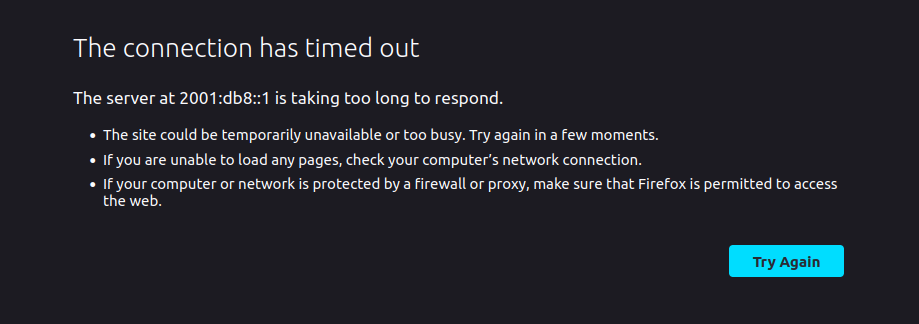This can be automated by an app with Shizuku integration, but Shizuku unfortunately needs to be set up every time the device is rebooted.
glibg10b
- 0 Posts
- 49 Comments
I believe there’s an LSposed module that lets you enable or disable each direction individually
Then I doubt there’s a solution. If there is, it probably involves enabling a hidden setting from an adb shell
Is your phone rooted?

 2·1 year ago
2·1 year agoI’ve never had issues with TERM=xterm

 5·1 year ago
5·1 year agoKitty if you have a GPU and run programs that have a lot of output (build scripts and emerge). It uses the GPU for better performance.
If it will be used by non-tech savvy people, why do you care about snap and IBM? Do the people care about that?
When you start getting super specific about which distro you want, I think you should start looking towards a DIY distro.

 1·2 years ago
1·2 years agodeleted by creator

 16·2 years ago
16·2 years agoI wanted to use fio to benchmark my root drive. I had seen a tutorial saying that the
file=parameter should point to the device file, so I pointed it at /dev/sda. As you might expect, the write test didn’t go so well.

 24·2 years ago
24·2 years agoBefore installing Arch on a USB flash drive, I disabled ext4 journaling in order to reduce disk reads and writes, being fully aware of the implications (file corruption after unexpected power loss). I was confident that I would never have to pull the plug or the drive without issuing a normal shutdown first. Unfortunately, there was one possibility I hadn’t considered: sometimes, there’s that one service preventing your PC from turning off, and at that stage there’s no way to kill it (besides waiting for systemd to time out, but I was impatient).
So I pulled the plug. The system booted fine, but was missing some binaries. Unfortunately, I couldn’t use pacman to restore them because some of the files it relied on were also destroyed.
This was not the last time I went through this. Luckily I’ve learned my lesson by now
Before you can fix a bootloader, you first need to learn how to install and set up a bootloader. I think most people learn that part when they try Arch
Why do you advocate for keeping /home separate?
I personally don’t do it because the more partitions you have, the more often you need to fiddle around in GParted when one partition gets full. This is also why I use swap files instead of swap partitions
As far as I can tell, unless you distro-hop, separating /home doesn’t have any advantages. Even then, sharing one /home directory between multiple desktop environments can cause some problems
I agree with making and testing backups, though. My current strategy is to back everything up to a 4.2 TiB ZFS pool with daily snapshots on my LAN, and back up the most important data on that to the cloud
borked my bootloader and had to do a fresh install
That’s where you’re wrong :)
I think your misunderstanding comes from the fact that “wouldn’t work” can mean a lot of things, and you didn’t know quite what it meant
If
- you’re not on an IPv6 network,
- you enter the IPv6 address of a website into the address bar and
- the browser attempts to load that website (not a search engine),
then the connection will time out:

OP never got to step 3, which indicates a problem with the browser
What does that have to do with anything?
It’s only once you visit a website that it matters whether you’re on an IPv6 network. OP isn’t visiting the website at all; they’re just typing the address and being taken to their search engine
OP did not take this picture. Their story is made up. Here’s the original: https://lkml.org/lkml/2011/11/3/110

 3·2 years ago
3·2 years agoNeat, thanks for sharing
Here’s the above pseudocode in bash:
find /home/ -mindepth 1 -maxdepth 1 -type d -exec mount none {}/.cache/ -t tmpfs -o size=16G \;fordoesn’t work here because it uses spaces to delimit strings, which could cause issues with filenames that contain spacesYou can also create a systemd user service, which is useful if you don’t have root access. The above mount command requires root, but the following doesn’t and is more robust than symlinking to /tmp/:
ln -s $(mktemp -dp /var/tmp/) ~/.config/


That’s an interesting way to spell proprietary